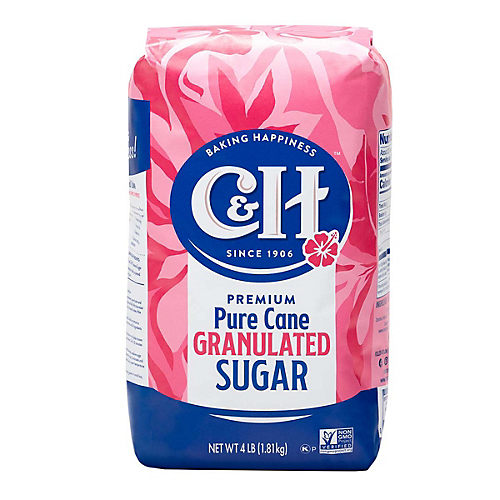Understanding the Essential Techniques and Technologies Utilized in Modern Cane Sugar Processing
The evolution of walking cane sugar processing has actually been dramatically shaped by the integration of innovative methods and modern technologies that attend to both efficiency and sustainability. As we discover these important improvements, it ends up being essential to examine just how they not only improve manufacturing however likewise align with wider market patterns and consumer demands, increasing questions regarding the future of sugar handling and its ramifications for worldwide markets.
Historic Context of Walking Stick Sugar Handling
The historic context of walking stick sugar processing reveals a rich tapestry of farming advancement and cultural exchange that has formed its development over centuries. The process of drawing out and improving sugar obtained momentum in India, where techniques for crystallization were developed around the 6th century.

Advanced Extraction Methods
Efficiency in walking stick sugar removal has seen significant innovations, driven by the requirement for higher returns and reduced manufacturing prices. This strategy not only enhances sugar return but additionally minimizes the energy required for processing.
Additionally, the fostering of membrane layer filtering innovations, such as nanofiltration and reverse osmosis, has actually reinvented the separation of sugar from impurities. These methods permit the selective permeation of sugar particles while keeping bigger impurities, enhancing the removal procedure and reducing waste.
Moreover, the assimilation of continual extraction systems has resulted in boosted functional effectiveness. Cane Sugar Processing. These systems keep a continuous flow of walking cane product, guaranteeing optimum removal conditions and decreasing downtime connected with batch handling
Ingenious Refining Technologies
Refining methods in cane sugar handling have undertaken a transformative change, driven by the need for greater purity and improved item high quality. Among the most noteworthy developments is the adoption of membrane layer filtration technologies, such as ultrafiltration and nanofiltration. These procedures efficiently remove pollutants and colorants without the need for considerable chemical therapies, thus protecting the sugar's all-natural taste and boosting its appeal.
An additional substantial improvement is making use of ion exchange materials, which permit for selective removal of undesirable ions from sugar remedies. This technology not only raises the total purity of the last item but also adds to decreased waste and environmental impact.
Additionally, advancements in adsorption methods, making use of turned on carbon and various other linked here advanced products, have shown efficient in decolorizing sugar remedies while preserving ideal high quality. The integration of these ingenious refining innovations makes sure that manufacturers can produce polished sugar with premium clearness and taste, fulfilling the developing preferences of consumers.
Automation and Control Systems
Current improvements in refining modern technologies have actually paved the method for substantial renovations in automation and control systems within cane sugar processing centers. These systems use advanced software application and hardware to enhance operational performance, minimize human mistake, and make sure regular item quality.
Modern automation incorporates numerous components, consisting of sensors, actuators, and programmable reasoning controllers (PLCs), allowing real-time tracking and control of crucial procedures. For example, circulation, stress, and temperature prices can be exactly controlled during removal, information, and condensation stages, optimizing efficiency and reducing waste.
Additionally, progressed data analytics and artificial intelligence formulas play a pivotal duty in predictive upkeep, allowing drivers to prepare for tools failings prior to they take place. This proactive method not only reduces downtime however additionally extends the lifespan of machinery.
In addition, automation assists in the application of Market 4.0 concepts, equipping sugar mills to attain greater connection and information exchange throughout procedures. Therefore, decision-making comes to be even more educated and active, ultimately enhancing the total competition of walking cane sugar production. With these advancements, the industry is well-positioned to fulfill expanding international demands while keeping functional quality.
Sustainability Practices in Sugar Production
Sustainability practices in sugar manufacturing have become increasingly essential as the industry looks for to balance economic feasibility with environmental obligation. As customer awareness expands relating to the environmental influences of farming practices, sugar manufacturers are you can try these out embracing innovative techniques to minimize check it out their eco-friendly impact.
One considerable technique is the application of precision agriculture strategies, which use data analytics to enhance resource usage, such as water and plant foods. This reduces waste and lessens the influence on regional environments. In addition, numerous manufacturers are transitioning to sustainable power sources, such as biomass from sugarcane byproducts, to power their procedures, therefore decreasing reliance on fossil fuels.
Water management methods are likewise vital; rain harvesting and effective watering systems assist mitigate water shortage issues. Cane Sugar Processing. In addition, incorporated pest management strategies reduce chemical use, advertising biodiversity and dirt health
Company social duty efforts are emerging, with companies purchasing local neighborhoods and making certain reasonable labor practices. By embracing these sustainability practices, the sugar sector not only enhances its track record however additionally adds to a more lasting farming landscape, leading the way for future generations.

Final Thought
In summary, modern-day walking stick sugar handling incorporates an array of innovative strategies and modern technologies that substantially enhance yield, performance, and sustainability. Collectively, these advancements place the walking cane sugar industry to satisfy modern demands while addressing essential global challenges.
The evolution of cane sugar handling has been substantially formed by the assimilation of innovative methods and technologies that address both efficiency and sustainability.The historical context of walking stick sugar handling reveals an abundant tapestry of farming development and cultural exchange that has actually shaped its growth over centuries. Innovations in milling and refining emerged, laying the groundwork for modern cane sugar handling.Refining methods in cane sugar handling have undertaken a transformative change, driven by the need for greater purity and boosted item high quality.In recap, contemporary walking cane sugar processing incorporates an array of sophisticated methods and innovations that substantially improve sustainability, performance, and yield.